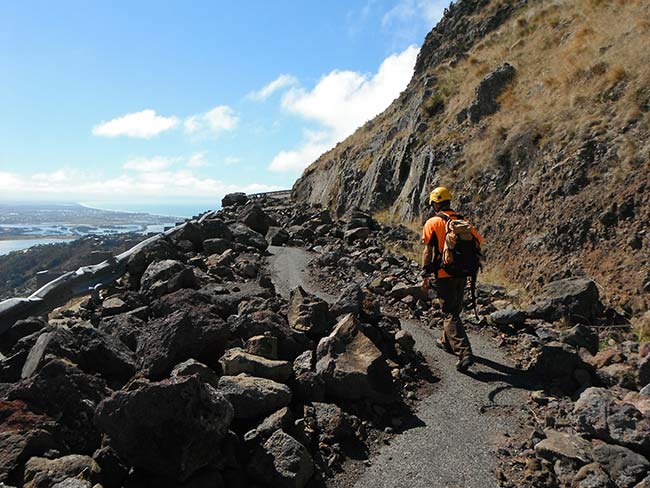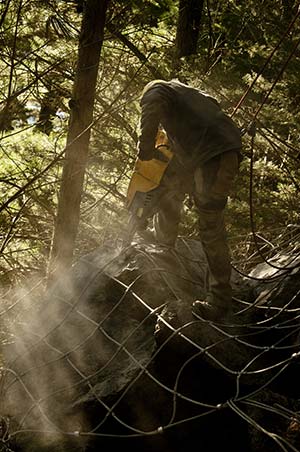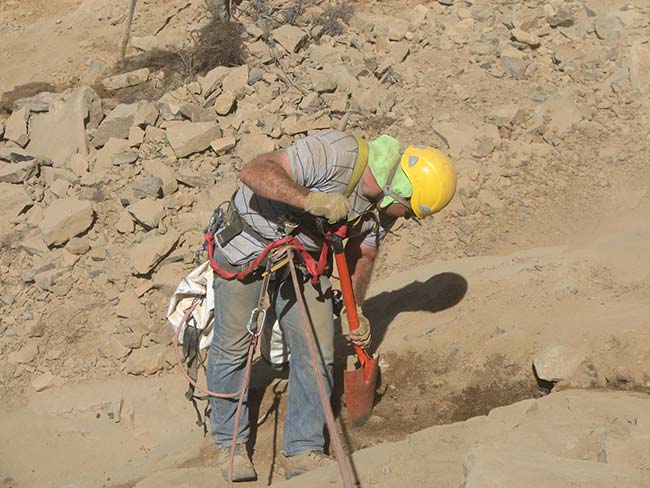Rockfall Control
Earthquakes in Christchurch changed the geographic landscape of our hillside suburbs. Rock buttresses, cliff bands and slopes that were previously designated as ‘safe’ and stable suddenly posed a threat to infrastructure located below them, resulting in the ‘red stickering’ and red zoning of many residential and commercial buildings. Following the initial September 2010 earthquake, Solutions 2 Access became actively involved in rock fall protection and remediation throughout Christchurch’s Port Hills.

 As most rocks are above city infrastructure and residential dwellings, Solutions 2 Access’ preferred method of rock fall control is the total removal of hazardous boulders. We do this first by covering the rock or boulder with mesh. The purpose of the mesh is to firstly safely contain the rock and secondly to absorb the energy caused by the breaking apart of the rocks, as well as to stop dangerously large pieces of fly rock from escaping. We break the rocks apart by drilling in strategic locations on the rock and then blast them, or fill the drilled holes with an expanding grout to break the rock. On occasion, Solutions 2 Access will establish a temporary rock fall fence below the rock being broken to catch any rock that may have escaped through the mesh. Once the rock has been safely broken, our teams then lower the pieces safely onto flat ground where they will not pose a risk to anyone, or lower them carefully into dug holes. Our teams and plant are extremely portable for this type of work; we can easily move around hillsides to attend to hazardous rocks.
As most rocks are above city infrastructure and residential dwellings, Solutions 2 Access’ preferred method of rock fall control is the total removal of hazardous boulders. We do this first by covering the rock or boulder with mesh. The purpose of the mesh is to firstly safely contain the rock and secondly to absorb the energy caused by the breaking apart of the rocks, as well as to stop dangerously large pieces of fly rock from escaping. We break the rocks apart by drilling in strategic locations on the rock and then blast them, or fill the drilled holes with an expanding grout to break the rock. On occasion, Solutions 2 Access will establish a temporary rock fall fence below the rock being broken to catch any rock that may have escaped through the mesh. Once the rock has been safely broken, our teams then lower the pieces safely onto flat ground where they will not pose a risk to anyone, or lower them carefully into dug holes. Our teams and plant are extremely portable for this type of work; we can easily move around hillsides to attend to hazardous rocks.
If Solutions 2 Access is unable to carry out a complete removal of boulders, our next preferred method is the securing of individual rock features. For smaller boulders, we establish anchors in the bed rock and then tie back the hazardous boulder with cabling. Larger boulders are secured using an air drill and compressor to bolt the rock back into the hillside with an appropriately sized bar. Generally, the holes are 3 to 7 meters deep, and a 25 to 32 millimetre wide bar is grouted into the hole. If there is a large area of hazardous loose rock, Solutions 2 Access teams will establish a rock fall fence below the site and then scale the entire area and remove what they can safely by hand. Following the ‘hand scale’, our teams will then secure the loose rocks with rock fall mesh, of which we have a variety to choose from depending upon its final application.

It is important to understand that due to the unique situation caused by first the September, then February and June earthquakes (not to mention subsequent aftershocks) has resulted in the need to safely and efficiently remove rocks from above residential and commercial dwellings. Hazardous rocks cannot simply be rolled downhill and left to their own devices; absolute caution and awareness of public safety is needed whilst providing rock fall remediation services.

